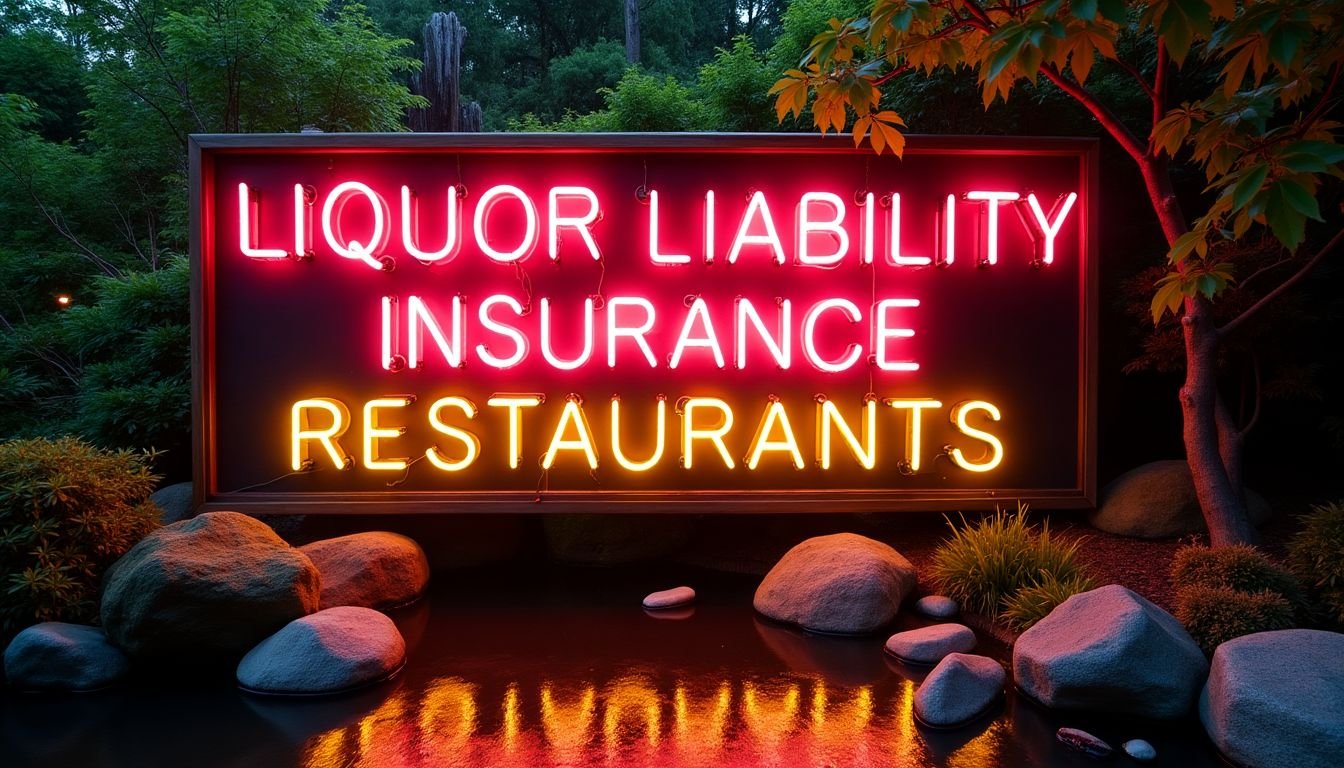Running a successful restaurant means keeping costs under control while maintaining a safe, productive workplace. One of the biggest expenses many restaurant owners face is workers’ compensation insurance. If you want to reduce workers’ comp costs restaurants, you need a proactive strategy that tackles high premiums and frequent claims right from the start. For an in‐depth look at workers’ compensation in the restaurant industry, check out our guide on Workers Compensation for Restaurants.
Understanding Workers’ Comp in Restaurants
Workers’ comp insurance is a safety net for both your employees and your business. In a fast-paced restaurant setting, accidents are common—think slips on wet floors, burns from hot equipment, or cuts from kitchen tools. Each claim not only raises your premiums but also leads to lost productivity. If you’re looking to reduce workers’ comp costs restaurants, it’s essential to understand these risks. For more details on the types of injuries that often drive these claims, visit Common Injuries Covered by Workers Comp.
7 Proven Ways to Reduce Workers’ Comp Costs
Reducing workers’ comp costs is not about cutting corners—it’s about building a culture of safety and efficiency that helps you reduce workers’ comp costs restaurants. Here are seven actionable strategies:
1. Prioritize Safety Training: Invest in Your Team’s Knowledge
One of the best ways to reduce injury-related claims is by investing in comprehensive safety training. Restaurants are busy environments with inherent risks, from hot kitchens to slippery floors. Proper training helps your staff recognize hazards and act to prevent accidents.
Key Training Areas:
- Proper Lifting Techniques: Teach your team how to lift heavy items safely to avoid back injuries.
- Knife Safety: Instruct on the correct use, handling, and storage of knives to prevent cuts.
- Slip and Fall Prevention: Emphasize the importance of cleaning spills immediately, using wet floor signs, and wearing non-slip footwear.
- Burn Prevention: Train kitchen staff in handling hot equipment and liquids safely.
- Chemical Safety: Ensure employees know how to handle cleaning chemicals, including proper dilution and the use of protective gear.
Regular, engaging training sessions empower your team to work safely every day.
2. Implement Preventative Measures: Create a Safe Work Environment
Actively creating a safe work environment is crucial to reduce workers’ comp costs restaurants. A proactive approach can prevent many common accidents.
Steps to Create a Safer Workplace:
- Non-slip Mats: Install these in high-risk areas such as kitchens, bars, and dishwashing stations.
- Clear Walkways: Keep corridors free of obstructions like boxes, chairs, or equipment.
- Proper Equipment Maintenance: Regularly inspect and maintain all tools and appliances—faulty equipment can lead to accidents.
- First-Aid Accessibility: Stock well-equipped first-aid kits and train your staff in basic first-aid procedures.
- Adequate Lighting: Ensure all areas, especially kitchens and storage rooms, are well-lit to help staff spot potential hazards.
These preventative measures show your commitment to safety and can significantly lower the risk of accidents.
3. Return-to-Work Programs: Support Recovery and Reduce Claim Duration
When an injury does occur, having a return-to-work program can help manage costs by getting employees back to work safely and quickly.
Key Elements of a Return-to-Work Program:
- Modified Duties: Offer temporary job adjustments that suit the injured employee’s current capabilities. This might involve light administrative tasks or less physically demanding roles.
- Clear Communication: Maintain regular contact with the injured employee, their healthcare provider, and your insurance carrier to coordinate the return process.
- Focus on Recovery: A structured program helps employees recover faster, reducing the overall claim duration and cost.
Return-to-work programs not only reduce expenses but also demonstrate that you value your team’s well-being.
4. Accident Investigation and Reporting: Learn from Every Incident
Every accident is an opportunity to improve. Establishing a clear process for accident investigation and reporting can help prevent future incidents.
Effective Reporting Procedures:
- Incident Reporting System: Implement an easy-to-use system for staff to report accidents immediately.
- Thorough Investigations: Look into every incident promptly to understand the root cause—whether it’s equipment failure, insufficient training, or a procedural lapse.
- Corrective Actions: Use insights from your investigations to update safety protocols or repair equipment as needed.
- Detailed Documentation: Maintain clear records of incidents and the corrective actions taken.
For more guidance on streamlining your claims process, refer to our guide on How to Submit an Insurance Claim. If you’re curious about handling unique incidents like dine and dash situations, check out our article Dine and Dash: Will Restaurant Insurance Cover This?.
5. Regular Safety Audits: Proactive Risk Assessment
Don’t wait for an accident to happen. Regular safety audits help you identify and address hazards before they lead to injuries.
Audit Best Practices:
- Scheduled Audits: Conduct safety checks monthly or quarterly to ensure ongoing compliance.
- Use Checklists: Develop checklists covering all critical areas such as kitchen safety, fire safety, and sanitation.
- Employee Involvement: Encourage your team to participate in audits—they are often the first to notice potential issues.
- Immediate Action: Address any hazards found during audits right away.
Regular audits reinforce your commitment to safety and help prevent accidents before they occur.
6. Employee Wellness Programs: Invest in Long-Term Health
A healthy team is less prone to accidents. Consider implementing wellness programs that promote overall well-being and reduce the likelihood of injury.
Wellness Program Ideas:
- Ergonomic Improvements: Provide training on proper posture and adjust equipment to reduce strain.
- Stress Management: Offer resources or workshops on managing workplace stress.
- Health and Nutrition: Share tips on healthy eating and encourage regular breaks to combat fatigue.
- Regular Breaks: Ensure staff are not overworked by enforcing scheduled breaks.
Investing in employee wellness can lead to fewer injuries, reduced absenteeism, and lower workers’ comp costs.
7. Partner with the Right Insurance Provider: Choose a Supportive Ally
Your insurance provider plays a crucial role in managing workers’ comp costs. It’s essential to partner with a provider who understands the unique risks of the restaurant industry and offers more than just basic coverage.
What to Look For:
- Industry Expertise: Select a provider experienced with restaurants who can offer insights specific to your business.
- Risk Management Resources: Choose one that provides training materials or on-site consultations to help improve safety.
- Efficient Claims Handling: A provider known for fair and prompt claims processing can help reduce overall costs.
- Competitive Rates: While price matters, consider the value and support offered. Compare multiple providers to find the best match.
For more information on choosing a partner who supports your business, see Workers Compensation Insurance Protects Your Business.
Actionable Steps for Restaurant Owners
Ready to reduce your workers’ comp costs? Here are five immediate steps you can take:
- Schedule a Safety Audit: Identify and fix hazards in your restaurant.
- Plan Regular Training Sessions: Set a recurring schedule for safety training and refreshers.
- Implement a Clear Incident Reporting System: Ensure that every accident is documented and reviewed.
- Review Your Insurance Policy Annually: Work with your provider to adjust coverage as needed.
- Invest in Ergonomic Upgrades and Wellness Programs: Create a healthier, safer work environment.
Taking these steps can help you create a safer workplace and boost your profit margins.
FAQ: Common Questions About Restaurant Workers’ Compensation
1. What is workers’ compensation insurance and why is it important for restaurants?
Workers’ comp insurance covers medical expenses and lost wages when an employee is injured on the job. It protects your staff and helps control costs related to workplace injuries.
2. What are the most common types of workers’ comp claims in restaurants?
Common claims include slips, trips, and falls; cuts from kitchen tools; burns from hot equipment; and strains from lifting heavy items. These claims drive up insurance costs.
3. How does safety training help reduce workers’ comp costs?
Effective safety training equips employees to recognize and avoid hazards, resulting in fewer accidents and lower claim frequency, which in turn reduces premiums.
4. What is a return-to-work program and how does it help save money?
A return-to-work program allows injured employees to resume work in a modified capacity, reducing lost productivity and the duration of claims, thereby lowering overall costs.
5. How do I choose the right insurance provider for my restaurant?
Look for a provider with industry expertise, risk management resources, efficient claims handling, and competitive rates. The right partner can offer valuable support to help manage and reduce costs.
Conclusion
Reducing workers’ comp costs in your restaurant is about more than saving money—it’s about creating a safe, efficient workplace that benefits everyone. By prioritizing training, enforcing preventative measures, and partnering with the right insurance provider, you can protect your employees and boost your profits. To explore further on the financial impact of workers’ comp, check out our post on How Workers Compensation Impacts Restaurant Profit Margins.
Are you ready to take control of your workers’ comp expenses? For personalized advice on implementing these strategies, call us at (818) 781-6630 to speak with an agent or chat with AI Agent Sky, available 24/7 at the bottom right.
Get a workers’ comp quote HERE in minutes!
Connect with Panorama Insurance on social media to stay informed and engaged with the latest updates and resources for your business:






